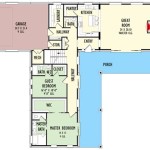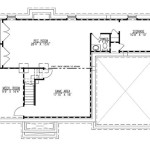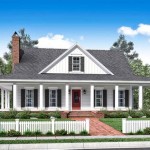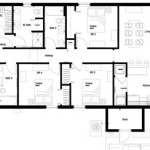House Plans: Understanding the Costs to Build
Building a new home is a significant investment, and understanding the associated costs is crucial for successful project management. The cost to build a house is influenced by a multitude of factors, starting with the house plans themselves. These plans dictate the size, complexity, and material requirements of the home, all of which directly impact the total expense. This article will delve into the intricacies of how house plans affect the cost to build, examining various cost drivers and offering insights into how to budget effectively.
House plans are more than just blueprints; they are the comprehensive set of documents that guide the entire construction process. They include architectural drawings, structural engineering plans, mechanical, electrical, and plumbing (MEP) layouts, and site plans. Each of these components contributes to the overall cost of the project. The complexity of these plans, the level of detail provided, and the specific materials and techniques specified all play a role in determining the final construction cost.
Before embarking on a building project, it is essential to obtain accurate and detailed house plans. Whether these are stock plans purchased from a vendor or custom-designed plans created by an architect, they serve as the foundation for cost estimation and construction. Inaccurate or incomplete plans can lead to unexpected expenses and delays, highlighting the importance of investing in high-quality plans from the outset.
Size and Complexity: The Primary Cost Drivers
The size of the house, measured in square footage, is one of the most significant determinants of construction cost. Larger homes require more materials, more labor, and more time to complete. While this may seem self-evident, the relationship between square footage and cost is not always linear. The complexity of the design also plays a crucial role. A simple, rectangular home is generally less expensive to build per square foot than a home with intricate angles, multiple gables, and complex rooflines.
Foundation design also impacts cost associated with size and complexity. A simple slab foundation is typically less expensive than a basement or crawl space. Basements, in particular, can add significantly to the cost due to the excavation and structural work involved. If the plans call for a walk-out basement or a basement with specific features like waterproofing or insulation, the cost will increase further.
The number of stories also influences the cost. A single-story home typically requires a larger foundation and roof area compared to a two-story home with the same square footage. However, two-story homes involve additional structural considerations and potentially higher labor costs for constructing the upper level. The chosen building materials, as specified in the plans, also contribute to the overall cost. High-end materials like natural stone, hardwood flooring, and custom cabinetry will inevitably increase the cost compared to more economical alternatives like vinyl siding, laminate flooring, and stock cabinets.
Furthermore, complex architectural details such as curved walls, vaulted ceilings, and custom windows can significantly impact the cost to build. These features require specialized labor and often involve custom fabrication, adding to both material and labor expenses. Careful consideration of these design choices during the planning phase is crucial for managing the budget effectively.
Material Selection and Specification
The materials specified in the house plans are a major component of the overall cost. This includes everything from the foundation materials to the roofing materials, siding, windows, doors, and interior finishes. The choice of materials is influenced by factors such as aesthetic preferences, durability requirements, energy efficiency goals, and budget constraints. It is important to carefully consider the trade-offs between these factors when selecting materials.
For example, choosing high-end roofing materials such as slate or tile will significantly increase the cost compared to asphalt shingles. However, these materials offer superior durability and longevity, potentially offsetting the higher initial cost over the long term. Similarly, selecting energy-efficient windows and insulation can reduce energy consumption and lower utility bills, but may require a higher initial investment. The house plans should clearly specify the type and quality of all materials to be used in the construction process.
The level of detail in the material specifications also impacts cost. For instance, specifying custom-made cabinets versus stock cabinets can significantly increase the cabinetry budget. Similarly, choosing high-end plumbing fixtures and appliances can add to the overall cost. It's essential to obtain multiple quotes from suppliers and subcontractors to accurately estimate the cost of materials and installation. Substituting materials with lower-cost alternatives can be a viable option for reducing expenses, but it's crucial to ensure that the substitutions do not compromise the structural integrity or aesthetic appeal of the home.
Sustainable materials and green building practices can also impact the cost. While some sustainable materials may be more expensive upfront, they can offer long-term benefits such as improved energy efficiency, reduced environmental impact, and a healthier indoor environment. House plans that incorporate sustainable design principles may require specialized materials and construction techniques, which can affect the overall cost. The plans must therefore clearly outline these choices.
Labor Costs and Construction Complexity
Labor costs represent a significant portion of the total cost to build a house. These costs include the wages paid to various tradespeople such as carpenters, electricians, plumbers, masons, and painters. Labor rates vary depending on the location, the experience and skill level of the workers, and the demand for their services. The complexity of the house plans directly impacts the amount of labor required to complete the project.
More complex designs with intricate details and non-standard features require more skilled labor and more time to complete. For example, installing custom-designed cabinetry or building a curved staircase requires specialized expertise and takes longer than installing standard cabinetry or a straight staircase. Similarly, complex roofing systems with multiple gables and dormers require more labor than a simple gable roof.
The availability of skilled labor in the area can also affect labor costs. In areas with a shortage of skilled tradespeople, contractors may charge higher rates due to increased demand. Labor costs are also influenced by the efficiency of the construction process. Well-coordinated project management and clear communication between the various trades can help to minimize delays and reduce labor costs.
The house plans should be detailed enough to allow contractors to accurately estimate the labor required for each stage of the construction process. This includes specifying the type of work to be done, the materials to be used, and the expected duration of each task. Incomplete or ambiguous plans can lead to miscommunication and cost overruns due to unforeseen labor expenses. The complexity of the construction process will determine the necessary number of tradespeople and the time needed ultimately affecting the final cost.
Furthermore, specialized construction techniques, such as building a passive house or incorporating advanced energy-efficient systems, may require specialized training and expertise, which can further increase labor costs. The use of prefabricated components, such as wall panels or roof trusses, can potentially reduce labor costs by streamlining the construction process. However, the cost savings from using prefabricated components must be weighed against the cost of the components themselves.
In addition to the visible costs stated in the plans, there are also associated soft costs that contribute to the cost to build a house. These costs include architectural fees, engineering fees, permit fees, and insurance costs. Architectural fees can range from a percentage of the total construction cost to an hourly rate, depending on the architect and the scope of services provided. Engineering fees cover the cost of structural engineering, which is essential for ensuring the structural integrity of the house. Permit fees are charged by local authorities to cover the cost of reviewing and approving the building plans. Insurance costs include builder's risk insurance, which protects the property from damage during construction, and liability insurance, which protects the builder and homeowner from claims arising from accidents on the construction site.
Contingency funds are also an essential component of the budget. Unexpected expenses often arise during construction, such as unforeseen site conditions, material price increases, or changes requested by the homeowner. A contingency fund of 5% to 10% of the total construction cost can help to cover these unexpected expenses and prevent the project from going over budget. Regular monitoring of the budget and tracking of expenses are crucial for managing costs effectively throughout the construction process, making any necessary adjustments that keep the project within budget.

House Plans With Cost To Build The Plan Collection

Estimated Cost To Build Report Information House Plans And More

Est House Plans To Build Simple With Style Blog Eplans Com

Get The Lowdown On Cost To Build Estimates Houseplans Blog Com

16 Cutest Tiny Home Plans With Cost To Build Craft Mart

Get The Lowdown On Cost To Build Estimates Houseplans Blog Com

16 Cutest Tiny Home Plans With Cost To Build Craft Mart

Est House Plans To Build Simple With Style Blog Eplans Com

How Much Does It Cost To Build A House Urban Homes Blogs

Get The Lowdown On Cost To Build Estimates Houseplans Blog Com








